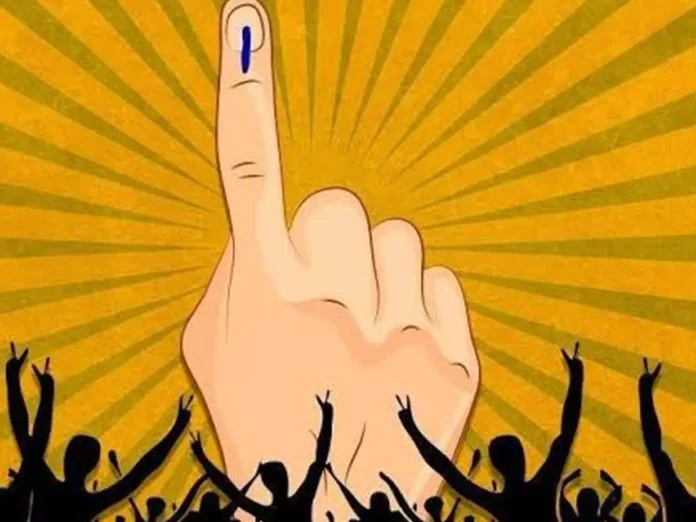The 2014 general election in India will be one on a scale never seen before. More than 814 million eligible voters will cast their mandate as the nation goes to poll in April.
There are currently about 120 practicing electoral democracies in the world and India’s role as a nation standing for democratic ideals would be crucial for a world struggling to keep pace with growing economic slump, intolerance, confrontation and instability.
The main players in the battle are the incumbent Indian National Congress Party (Congress), which has led India’s ruling coalition since 2004, the opposition Hindu Nationalist Bharatiya Janata Party (BJP), and the upstart Aam Aadmi Party (AAP), trying to cash in on the new anti-corruption wave.
Additionally, a diverse group of regional parties dominate the Indian politics which will reportedly play a significant role in forming the next government at the centre.
No single political party in India has won a parliamentary majority since 1989, and none is likely to do so this year without the support of regional parties.
However, the elections this year will mark a watershed for the future of India’s politics. Opinion Polls predict a massive win for opposition BJP—almost twice the seats the party got in the last national election in 2009.
Ideologically the BJP is a right wing, Hindu nationalist party that enjoyed a single full term governing India from 1998 to 2004. The tenure saw a broad coalition supported by regional alliances that prevented the party from translating its extreme Hindu-sectarian impulses into actual policies.
This time the BJP is banking on a ‘one-man show’ under Narendra Modi’s stewardship. Modi, three-time chief minister from the state of Gujarat is one the most controversial mascot ever seen in India’s politics.
Modi is well-known for two things—his alleged complicity in the massacre of thousands of Muslims during the riots that took place shortly after he took over the reins of Gujarat in 2001 and steering the ‘miraculous and spectacular’ economic growth in Gujarat.
“My government has performed remarkably in the last decade. Agriculture production, which was at Rs 9,000 crore in year 2001-02, has been gone up to Rs 1,12,000 crore in the last fiscal. In year 2001-02, total production of milk was 58.76 lakh metric tonne, which is now 103.15 lakh tonne.” Kamla Beniwal, the Governor of Gujarat
The Indian business community which dominates Indian journalism along with the urban middle-class has propagated Modi’s supposedly macho image as a ‘decisive leader’ capable of taking bold decision; that only Modi has the means to rescue India from the downward-spiralling economic slump and scourge of corruption.
Almost two-thirds of India’s population is under 35 years and almost half is less than 25. This population form the bulk of the electorate—armed with less than primary education or a college degree—hopes, in desperation, that Narendra Modi will do a better job in solving India’s fundamental problems related to corruption, job scarcity, terrorism and poverty.
Given a decade of scandals and bad reputation the present government has gathered in India and abroad, Modi’s supporters just don’t care about his guilt or innocence!
Compared to the Indian (mostly Congress and Left-wing) intellectuals voicing reservations against Modi, a significant portion of the electorate, especially the urban middle class is conveniently choosing to ride the Modi-wave and overlook into the sectarian impulses of the BJP—a party that has carried out some of the most religiously divisive activities since India’s Independence to remain in power.
Wedged in between the false promises of the Congress playing the ‘Muslim-minority card’ for decades and the BJP are India’s nearly 180 million Muslims. They constitute about 14% of India’s population!
Undoubtedly the Indian Muslims represent a significant vote base that Modi and the BJP have failed to reach out to. At the least, the BJP has failed to allay their fears— that their aspirations and notions of religious freedom would remain safe even if BJP comes to power.
Amid all the permutation and combinations, the 2014 elections represent interesting dynamics in Indian politics. The possibilities could be alarming and extreme should Narendra Modi clinch the top post.
Modi, a self-assured ace orator unlike Congress’ Rahul Gandhi, has regularly vouched for firm and effective governance and inclusiveness in his election rhetoric. It is to be seen how he would reconcile India’s visions of secular polity with the divisive ideology of the saffron-clad right wing organization (Rashtriya Swayamsevak Sangh) that sustains his credentials. Indeed, the real test will come after Modi is elected!
Democracy is not one thing. It is by nature complex and messy. Indian political consciousness is in a constant flux and the 2014 elections will play a part in how that turns out.
The main strength of democracy is an informed public. It is an attempt to highlight the bargains that informed Indians would probably be making this coming election.
What would be the consequences in the long term is something that no one can quite predict. The choice remains over choosing economic growth and good governance while remaining oblivious to notions of intellectual freedom, tolerance, and a long-standing secular consensus that India as a multi-faith nations has been struggling to build ever since it achieved independence.

